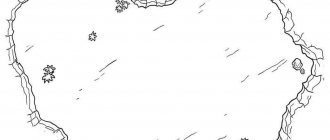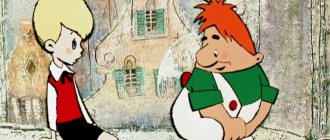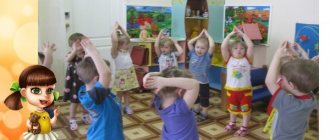Mark locations for hiding places with clues
Hiding places, on the one hand, should not be too obvious (that is, a noticeable hollow in a tree is a so-so option), and on the other hand, they should be such that children can definitely detect them.
For example, if the task prompt is written on paper, a bowl of candy in paper wrappers would be a good hiding place. The photograph can be placed on the refrigerator, secured with a magnet among other photographs.
For a quest in which very young children participate, 5–6 hiding places are enough, otherwise there is a risk that the children will become very tired. But with teenagers you will have to use your imagination: mark at least 10-15 places for hidden clues.
Prepare a place to play
If the game will take place indoors, if possible, clear it and make it safe - remove unnecessary chairs and tables, hide fragile items, make sure that the furniture does not wobble, and that the door cannot be slammed.
Outdoor play space also requires preparation. At a minimum, make sure that there are no holes or thickets of nettles in the chosen location. Also, think about how to limit the search area so that little participants don't get lost. It might be worth stringing a string with paper flags between the trees, or drawing a boundary with chalk on the asphalt.
Think through the details
To get started, answer a few simple questions. This will give you a better idea of what the event should look like.
Who is the quest for?
How old are the participants? What do they like more: active entertainment or puzzles?
Thus, children under eight years old are interested in running and working with their hands - for example, throwing balls at a target (for example, knocking down a hat with a clue hanging on a tree with them) or looking for a specific toy in a huge basket with different objects.
But older children may be interested in more serious logical problems.
How many children will participate?
If there are more than eight of them, it is better to divide the participants into two teams: then everyone will be able to express themselves.
Organize your own chain of hints for each group so that the tasks do not overlap. And make sure the teams don't have to compete. All participants should enjoy the game, not be disappointed, and be sure to win a prize.
Where will the quest take place?
A park, a playground, an apartment or a private house are fundamentally different locations. For example, in the park you can run or have a balloon fight. In a not very spacious apartment, the same measures are fraught with broken china, a cluttered closet and, possibly, unscheduled repairs.
Therefore, if you want to organize an active game, consider moving the quest outside. But a small apartment is also good for logical tasks.
In what format will the quest take place?
Do children need costumes? Are you ready to spend money, for example, on a chest with chocolate coins or will you make it yourself from a cardboard box and fill it with homemade marshmallows?
Will this be a semi-official event - with printed invitations, beautiful envelopes for riddles, or will it be about a quest “for our own people”, with a minimum of props - let’s say, with problems written by hand on simple checkered pieces of paper?
Think over an option for which you have enough desire, money, time and effort.
Come up with riddles and clues
For a quest to be truly fun, the clues should not be repeated. Here are some alternatives.
Puzzles
For kids they can be the simplest. For older children - with a catch. Let’s say: “Why do students usually get kicked out of class?” Correct answer: out the door. The next clue will lie behind it. Or here’s another: “What will become one and a half times larger if you put it upside down?” Correct answer: six.
Graphics tasks
For example, this one.
Illustration: Evgeniy yes / Shutterstock
You can find many options for similar tasks on the Internet, here is another one.
Illustration: Evgeniy yes / Shutterstock
Just keep in mind that you will need to print them out in advance or draw them beautifully on paper yourself.
Mirror messages
This is a note that can only be read by looking at it in a mirror image. Don't forget to put a small mirror somewhere nearby.
Anagrams
These are words that are formed from others by rearranging letters. For example, a brand is a frame. Or rubbing is a picture.
Invite the children to solve the anagram, telling them that the answer will be a clue. Let’s say the word “Fist” will indicate a doll in whose dress the next element of the quest is hidden.
Acrostics
These are poems in which the first letters of each line, when read together, form a meaningful text. For example:
The azure day has faded, faded, The night shadow, Ah , hid us.
Draw a large, recognizable moon on a piece of album paper, write the following clue on the back and hang the picture, say, on the refrigerator.
Examples of acrostics are easy to find on the Internet. But if you don’t have time to look for a suitable literary work, you can simplify the task. Schematically draw a skirt, a leaf, a watermelon underneath each other - this will be a “spinning top”.
Photo riddles
Take two photographs of the same place, changing something about it. For example, in the first photo there are two bananas, an apple, a book and a bowl of candy on the table, while in the second there are no candies. The missing element will be your clue.
Musical tips
Tell the children: “Your ears will help you find the answer.” And then, while they are trying to figure out what it means, play a popular song, which is the clue. For example, “A Christmas tree was born in the forest” will indicate that the next element of the quest should be looked for under the New Year tree. And “Clouds are white-maned horses!” It will help if you decorate the closet door in advance with cloud stickers, behind which the desired find awaits the participants.
QR codes
The picture or text with the hint is on the Internet. And the link to the desired page is encrypted in a QR code that children can scan with a smartphone. If, of course, they pay attention to the QR code.
Quest for teenagers 14-16 years old - features
Quests are interactive entertainment. During these events, players perform various actions to achieve a certain goal, to reach the finish line. At the end of the quest there should be a certain motivating prize. If a quest for teenagers is held in honor of a birthday, then the reward may be a certain gift or cake. It wouldn’t hurt for all participating young people to receive small but pleasant surprises.
Quest room Trap
In reality, many interesting, exciting quests have already been invented for teenagers aged 14-16, where various tasks are performed. The subject matter can be very diverse. Quests are created based on your favorite films, novels, and cartoons.
They are also divided into such groups:
- Quest in open space
- Indoor quest (quest rooms)
- Quests on historical themes
- Quests on detective and spy themes
- Scientific quests
- Quests for 1-2 people
- Group quests.
- Quests with one solution to the problem (single-level)
- Quests are multi-tasking.
Types of quests
Thanks to these games, not only for children, but also for adults, you can feel collective unity in completing tasks, unforgettable sensations, and positive emotions. Each participant will show their potential and discover new abilities.











